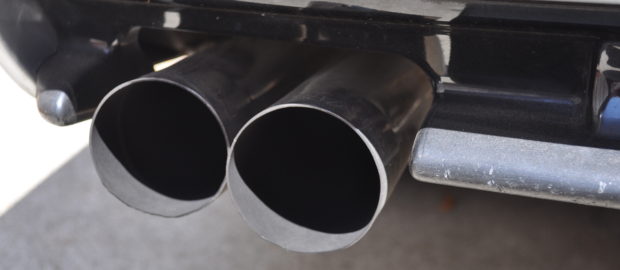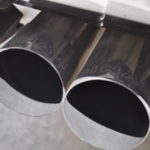Every two years, when your registration shows up in the mail, the state of California will issue an emissions test on most vehicles based upon which county they’re registered. Given that the majority of the population of the state lives within reasonable distance of Los Angeles, San Diego, and San Francisco, this means most people have to go get their car smogged biennially.
Most people simply make time during their lunch break or Saturday morning and go get the smog check done. They proceed to hop in their cars and drive off and wonder why they paid an extra 70 bucks to smog their car this time around. Then they go about driving to pick their kid up from a play date where gluten free snacks were served.
If you drive an old car in California, smog may as well be a prostate exam combined with sitting next to a crying baby on a long distance flight. The process is geared to make people purchase new cars. It took myself a total of five attempts and a cool thousand gwala dollaz by the time I was done…just to be able to pay my registration. The principal of smog checks is understandable for populated areas, but the practices themselves have substantial room for improvement as the testing targets select cars towards failing. Here is a bit of explanation as to some of the current rules:
Cars from 1976-1995 in California typically have to perform an emissions test on a roller dyno. Some trucks or 4WD vehicles may take a stationary engine rev test in lieu of the roller test, as most facilities aren’t equipped with 4WD dynos. Emission standards get progressively stricter for each age range.
OBD2 (on board diagnostics version 2) cars from the year 2000 onwards do a simple plug in check to the computer to make sure all systems function. They do not do the sniffer test. New cars don’t even have to be smogged until they’re at least 6 model years old, or upon transfer of ownership after 4 model years.
If you’ve noticed, there’s a gap from 1996 through 1999 that has yet to be mentioned. These cars have the short straw. They are required to be tested by both the computer as well as the sniffer test. The emissions limits become noticeably stricter from 1995 to 1996, being that 1996 is the first year of OBD2. The problem is that many manufacturers simply carried over existing motors and converted them to run OBD2. As cars get older, these emission standards are much tougher to meet.
- Here’s the old midsection after being driven to the moon
- Exhaust tips look a little dirty according to the state of CA…
- A trip to the exhaust shop and $450 later
RUNNING ON FUMES
My car is a 1996 BMW 328is. After nearly 20 years on the original cats, it was having a tough time passing smog. I did the responsible thing and had new California Legal Cats welded on. After 4 smog attempts and changing virtually every fluid and sensor (most of which were functioning perfectly well), I was not able to pass smog. On the 5th attempt, the technician ran the test with car in 2nd gear and it passed without a hitch. Previously, the other shops would run the car in 3rd gear at low revs, so it would bog and produce more unburnt fuel emissions (Hydrocarbons). I’m not a racecar driver, but 1800 rpm is nowhere near where that engine should be revving, even when putting around town.
Ultimately you may wonder what is the point of all this gibberish. It’s that the state of California doesn’t like old cars. They make the standards very difficult to meet, so people trade in cars that function properly in every other regard. The part that ruffles my feathers the most is that a car 2000 or newer can pass smog with all sorts of modifications, all because they are only required to run a plug-in computer check. So this means a car with a cat delete of sorts or an aggressively rich tune can pass smog because those parameters can be “flashed” to show functionality, regardless if those components are actually present. Granted one still has to pass a visual inspection, but not every smog tech is a hardcore enthusiast spotting minuscule differences.
At the end of the day, the smog check system needs a major overhaul. The rolling 30 year rule was a good idea, as once cars achieved 30 years of age, they were exempt from emissions testing. This probably has to do with these car not being daily drivers. However, it gave dedicated people something to look forward to as they continued to keep their cars on the road. Anything newer than 1975 still has to be tested, which makes a lot of potential chassis platforms duds for performance minded people because they’re just not old enough to be exempt. Nowadays you get punished with strict testing, unless you live in the parts of California that have a town with 50 people and 5 last names. You guys are off the hook! As for me, I’m simply exhausted. And no, I don’t sound as sweet as the one that shoots raw gasoline out the tailpipe at 6500 RPM.
-JC












